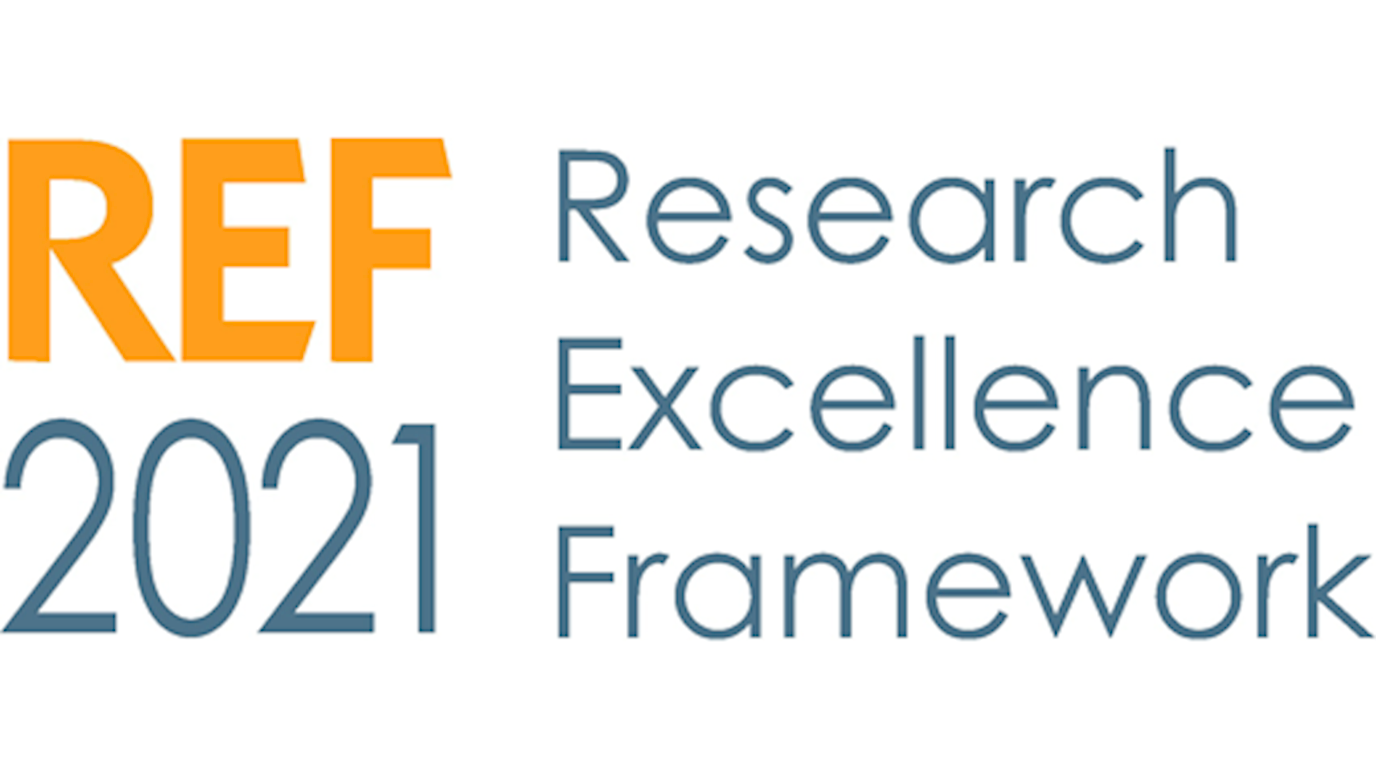Our research is increasing our understanding of the world and helping to tackle some of the complex challenges we face in the 21st century
If you would like to get in touch in relation to any of this research, please contact Dr Juan Pablo Rud at juan.rud@royalholloway.ac.uk.
Covid-19
Google searches during the lockdown suggest a large increase in domestic violence
A key concern during the ongoing pandemic was that the lockdown policies that were adopted in many countries could potentially trigger increases in the prevalence of intimate partner violence (IPV). Reports from charities and helpline providers indeed reported substantial increases in the demand for their services. Research based on police data in contrast showed only very small increases in reported domestic abuse cases. This, however, could reflect a reduced propensity to report abuse to the police. We use daily data from Google Trends on search intensities for a large number of IPV-related search terms along with daily data on reported cases from the London Metropolitan Police Service spanning five years. This allows us to generate a search-based measure of IPV incidence using pre-crisis data. We can then compare the impact of the crisis on our search-based IPV measure and the police-reports based measure. In line with the findings in other studies we find only a small increase (<10%) in IPV when measured using the police data. In contrast, we find a much larger increase (close to 40%) when using our search-based IPV measure.
Remote working reduces women’s wages
Using data on American women and the health status of their children, this paper studies the effect of remote work on female earnings. Instrumental variables estimates, which exploit a temporary child health shock as exogenous variation in the propensity to work at home, yield an hourly wage penalty of 77.1 percent. Earnings losses together with positive selection, and alternative first-stage regressions, suggest that task re-assignment or lack of social interaction are likely mechanisms. The estimates also have implications for the costs of social distancing during a pandemic and may be especially applicable when children must be temporarily quarantined.
The effectiveness of social distancing at reducing the spread of an infectious disease depends on the configuration of the social network
How does social distancing affect the reach of an epidemic in social networks? We present Monte Carlo simulation results of a Susceptible-Infected-Removed (SIR) model on a network, where individuals are limited in the number of other people they can interact with. While increased social distancing always reduces the spread of an infectious disease, the magnitude varies greatly depending on the topology of the social network. Our results also reveal the importance of coordination at the global level. In particular, the public health benefits from social distancing to a group (e.g., a country) may be completely undone if that group maintains connections with outside groups that are not social distancing.
Pdf link: https://arxiv.org/pdf/2005.03067.pdf
Our Published Work
Are small farms really more productive than large farms?
This paper shows that using yields may not be informative of the relationship between farm size and productivity in the context of small-scale farming. This occurs because, in addition to productivity, yields pick up size-dependent market distortions and decreasing returns to scale. As a result, a positive relationship between farm productivity and land size may turn negative when using yields. We illustrate the empirical relevance of this issue with microdata from Uganda and show similar findings for Peru, Tanzania, and Bangladesh. In addition, we show that the dispersion in both measures of productivity across farms of similar size is so large that it renders farm size an ineffective indicator for policy targeting. Our findings stress the need to revisit the empirical evidence on the farm size-productivity relationship and its policy implications.
Capping interest rates on credit can benefit consumers with low credit ratings
In this paper, the authors build a framework to understand the effects of regulatory interventions in credit markets, such as caps on interest rates. They focus on the credit card market, in which they observe US consumers borrowing at high and very dispersed interest rates despite receiving many credit card offers. Their calibration suggests that most borrowers examine few of the offers they receive, and thereby forego cards with low interest rates and high non-price benefits. The calibrated model implies that interest-rate caps reduce credit supply and significantly curb lenders’ market power, thereby increasing consumer surplus.
Peer linguistic diversity does not harm native students but enhances non-native speaking students’ performance
This study uses administrative records of economics students at a university in the London metropolitan area to show that, contrary to commonly held beliefs about negative spill-overs from foreign students, the performance of English-speaking students is unaffected by the share of non-English-speaking students and the linguistic diversity of a classroom. Furthermore, increased linguistic diversity improves the academic performance of non-English-speaking students, especially for low-achieving students. This result appears to be driven by changed patterns of classroom interactions across ethnicities. Asked about their experiences, non-English-speaking students revealed they were much more likely to interact with English-speaking students when they were assigned to a more diverse classroom.
Exposure to intimate partner violence has a negative impact on children's skills accumulation
Children are increasingly recognized as secondary victims of intimate partner violence. This paper uses a unique UK longitudinal child development survey to study the relationship between verbal and physical abuse experienced by mothers and children's development up to the age of seven. Estimating production functions for cognitive, social, and socio-emotional skills, we find that exposure during pre-school years has a quantitatively important negative effect on socio-emotional skills among toddlers and negatively affects cognitive and social skills after the age of three. The estimated impact on cognitive development is consistent with measures of cognitive skills based on school-based tests.
Promises and trust in human-robot interaction
Understanding human trust in machine partners has become imperative due to the widespread use of intelligent machines in a variety of applications and contexts. The aim of this paper is to investigate whether human-beings trust a social robot—i.e. a human-like robot that embodies emotional states, empathy, and non-verbal communication—differently than other types of agents. The authors find that receiving a promise from the robot increases the trust of the human in it, but only for individuals who perceive the robot very similar to a human-being. Importantly, they observe a similar pattern in choices when they replace the humanoid counterpart with a real human but not when it is replaced by a computer-box. The results highlight an increased psychophysiological arousal when the game is played with the social robot compared to the computer-box. Taken all together, these results strongly support the development of technologies enhancing the humanity of robots.
Volunteering is supposed to be good for your CV, but research suggests it depends on who you are and what work you do
Recent trends in the labor market see increasing numbers of workers having to deal with ‘schedule precarity’ including volatile hours, rotating shift work, unpredictable work hours and lack of choice on the part of the employee. These trends are of concern to those interested in fostering levels of civic engagement because they potentially limit volunteering. We investigate interactions between work-schedule measures and pay structure because workers paid by the hour have lower volunteer rates than salaried workers. The study finds that, while three of the schedule dimensions are unrelated to volunteering, transitioning toward more schedule control has a positive effect on volunteering. However, interaction analysis shows this positive effect is confined to salaried workers whereas for hourly paid workers the effect is negative. The results support the idea that having more freedom to set one's work schedule reduces work-life conflict but suggest that this positive effect is limited to those who can take advantage of it.
Increasing the family size decreases the average child’s education
The authors study the effect of family size on a child’s education when parents have birth order preferences and/or face human capital cost differentials across children. The so-called ‘quantity–quality trade-off’ has been widely studied in the literature. However, despite the long-standing interest, theories of this trade-off have not typically integrated birth order effects in their analyses. The results show that for any given parity, the human capital profile of children in smaller families dominates that of large families, and that the average child’s education decreases as family size increases, even after taking birth order effects into consideration.
Evidence from African conflicts suggests that civilian targeting is decreasing in the resources available to conflict actors
Armed conflict actors frequently target civilian populations. The authors use the Civilian Targeting Index (CTI) and a broad array of geo-referenced data to investigate the spatio-temporal and economic dynamics of civilian targeting by conflict actors in Africa. The results show that non-state actors tend to increase their civilian targeting after nearby non-state actors have done so. Possible mechanisms to explain such spatial spillovers include emulation and retaliation. Moreover, a negative relationship between economic activity and civilian targeting exists and applies to both state and non-state actors. In addition, CTIs of non-state actors tend to increase with population density, the geographical spread of their conflict activity and conflict duration. State actors have higher average CTIs than non-state actors do, but the gap between the two actor types tends to close during long-duration conflicts.
Our ongoing work
Research into 1930s commuting in London shows how public transport boosts the labour market
The standard justification for public transport closures is economic feasibility – a lack of profitability for the service provider. As our work shows, however, such discussions often miss much of the full value of public transport to society. We examine the consequences of the commuter transport revolution on working class labour markets in 1930s London. The ability to commute alleviated urban crowding and increased workers’ choice of potential employers. Using GIS-based data constructed from the New Survey of London Life and Labour, we examine the extent of commuting and estimate the earnings returns to commuting. We obtain a lower-bound estimate of two percent increase in earnings per kilometer travelled. We also show that commuting was an important contributor to improving quality of life in the early-twentieth century. Find out more here.
An experiment on "Friendship paradox"
The “friendship paradox” refers to the fact that, on average, people have strictly fewer friends than their friends have. The oversampling of more popular people can lead people to perceive more engagement than exists in the overall population. This feeds back to amplify engagement in behaviors that involve complementarities. Also, people with the greatest proclivity for a behavior choose to interact the most, leading to further feedback and amplification. We design novel experimental tests of these theoretical results.
How rational are burglars?
Changes in the prize of gold on international markets affect the location of crime in the UK. Using detailed data on reported crime, Arnaud Chevalier and co-authors show that burglars alter their behaviour and increase their activities in neighbourhoods with a greater share of Asian households when the prize of gold goes up. This is because Asian households have a greater proclivity for holding gold – in the form of jewellery – making targeting these households rational when the prize of gold is high.
Racial differences in female wage rates for remote work are of similar importance to differential pay in high-skilled occupations
This paper studies the racial gap in the female wage penalty to remote work. Using a temporary child health problem as a source of exogenous variation in the propensity to work from home, wage penalties reach 86 percent for black women and 77 percent for white women. Promotion bias, task re-assignment and lack of productive social interaction are the most likely mechanisms for the wage losses. The estimates provide rare evidence on the differential costs of social distancing by race and may be especially applicable when children are temporarily quarantined due to illness.
Ignorance is Bliss: A Game of Regret
The outcome of a foregone alternative is not always learnt. We incorporate this observation into the classic decision theoretic model of regret (Bell, 1982, Loomes and Sugden, 1982), allowing for the ex-post information available to a regret averse decision maker to vary with choice. We show that more ex-post information is never desirable for a regret averse individual. We then suppose that there are multiple regret averse decision makers and that the ex-post information available to each depends both on own choice and on the choices of others. Thus, what appeared to be a series of isolated single individual decision problems is in fact a rich multi player behavioural game that we term regret game, where the psychological payoffs that depend on ex post information are interconnected.
Areas with high inflows of immigrants in the post-war years show greater support for redistribution today
This paper studies the impact of immigration on public policy setting. As a natural experiment, the authors exploit the sudden arrival of eight million forced migrants in West Germany after World War II. These migrants were on average poorer than the West German population, but unlike most international migrants they had full voting rights and were eligible for social welfare. Using panel data for West German cities the paper shows that local governments responded to this migration shock with selective and persistent tax raises as well as shifts in spending. In response to the inflow, farm and business owners were taxed more while residential property and wage bill taxes were left unchanged. Moreover, high-inflow cities significantly raised welfare spending while reducing spending on infrastructure and housing. Election data suggest that these policy changes were partly driven by the political influence of the immigrants: in high-inflow regions, the major parties were more likely to nominate immigrants as candidates, and a pro-immigrant party received high vote shares. The paper further documents that this episode of mass immigration had lasting effects on people’s preferences for redistribution. In areas with larger inflows in the 1940s, people have substantially higher demand for redistribution more than 50 years later.
Drone strikes in Pakistan are followed by strongly elevated rates of suicide attacks over the subsequent 30 days
Drone strikes are followed by strongly elevated rates of suicide attacks. On average, roughly one additional suicide attack occurred during a 30-day window following a drone strike in Pakistan. This suicide attack caused, on average, 20 deaths and 48 injuries. The trend of strike followed by suicide attack was elevated under Bush compared to Obama.
Community-Led Total Sanitation efforts lead to more construction and use of toilets, reducing open defecation, in poorer and more isolated communities
Inadequate sanitation is a leading cause of poverty in developing countries, largely because it causes premature mortality. But policymakers in Nigeria still struggle to improve sanitation practices despite their importance to national health and poverty eradication strategies. IFS and Royal Holloway researchers, in partnership with WaterAid, provide new evidence on the effectiveness of one of the most popular interventions used by policy-makers and NGOs to improve rural sanitation practices in developing countries.
























